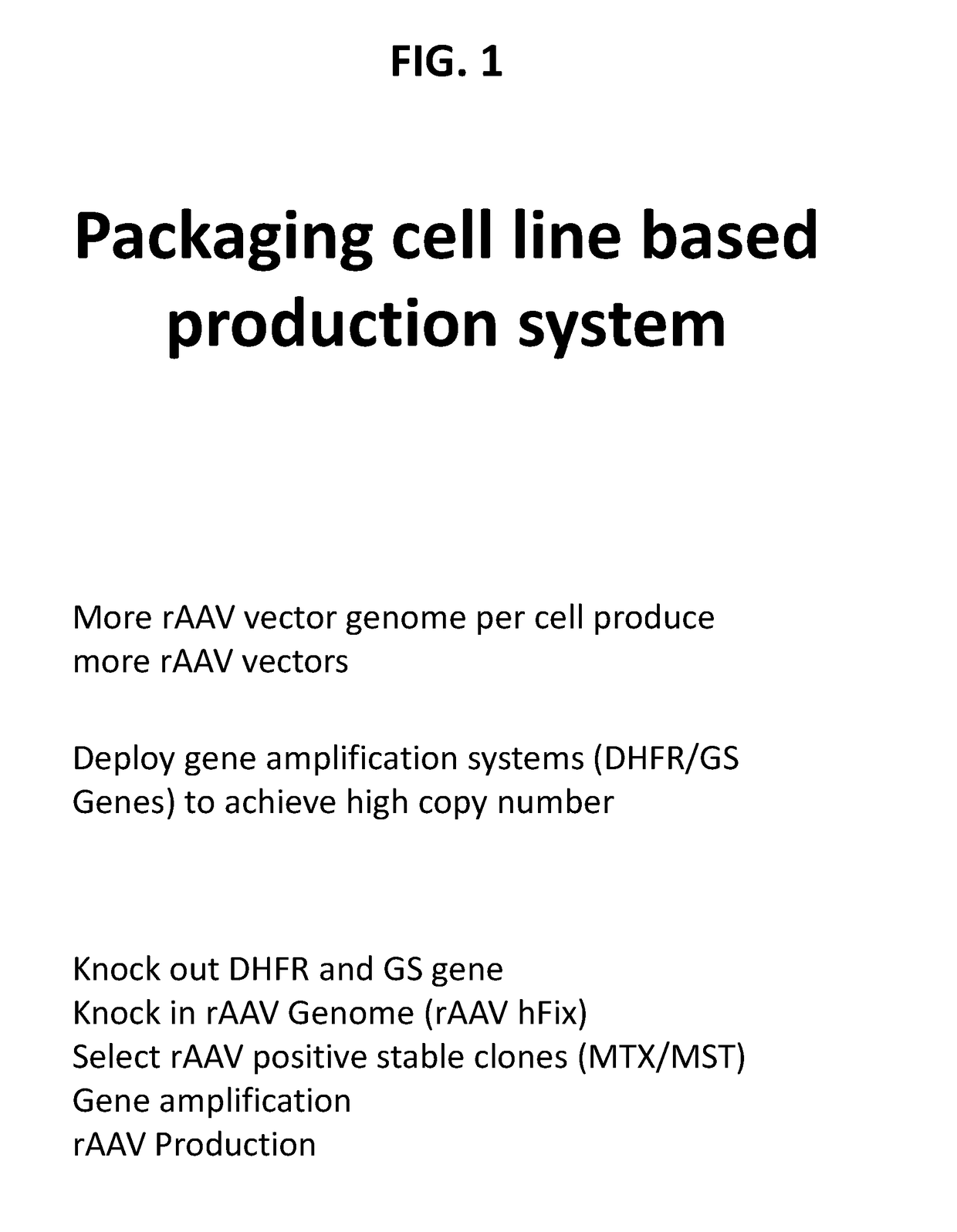Cell line for recombinant protein and/or viral vector production
a cell line and recombinant protein technology, applied in the field of cell line for recombinant protein and/or viral vector production, can solve the problem of not providing the second selectable marker
- Summary
- Abstract
- Description
- Claims
- Application Information
AI Technical Summary
Benefits of technology
Problems solved by technology
Method used
Image
Examples
example 1
[0098]This example describes producing invention HEK cells and cell lines, and subsequent transfer of viral genomes and virus (AAV) vector production.
[0099]Invention HEK cells and cell lines can be produced in a variety of ways, by knocking out the cell's endogenous DHFR gene and / or GS gene. For example, certain non-limiting methods include Zinc-finger nucleases (ZFNs) for targeted cleavage and gene inactivation (See, e.g., United States Patent Publications 20030232410; 20050208489; 20050026157; 20050064474; 20060188987; 20060063231; 2008 / 0015164; and International Publication WO 07 / 014275). ZFNs provide the ability to place a double-strand DNA break (DSB) at a chosen genomic address. The removal of this site-specific DSB is carried out by the cell's own DNA repair machinery via a homology-directed repair process when donor DNA is provided, or via non-homologous end joining (NHEJ)—See, e.g., Urnov et al. (2005) Nature 435:646-651 (2005); Moehle et al. (2007) Proc Natl Acad Sci USA 1...
example 2
[0102]This example describes certain non-limiting features of invention HEK cells and cell lines.
[0103]For example, in general:[0104]A. Stable producer clones.[0105]B. Human mammalian manufacturing cell clones with DHFR and / or GS gene(s) knocked out will enable selection of stable clones to express gene(s) of interest using DHFR or GS genes (or both) as selection markers, clones can be create for any gene(s) of interest, or viral vectors.[0106]C. Safer producing human cell line suitable for manufacture bio-products with gene amplification function to provide high productivity.[0107]D. DHFR and / or GS negative genome background of cell lines created will allow gene amplification of the gene(s) of interest, therefor leads to high specific productivity.[0108]E. Clean genomic background, no need to introduce antibiotic markers to select positive producer clones, therefor safer clones to manufacture recombinant proteins, viral vectors such as rAAV vectors.[0109]F. Reduced labor cost and m...
PUM
| Property | Measurement | Unit |
|---|---|---|
| resistance | aaaaa | aaaaa |
| nucleic acid sequence | aaaaa | aaaaa |
| concentrations | aaaaa | aaaaa |
Abstract
Description
Claims
Application Information
 Login to View More
Login to View More - R&D
- Intellectual Property
- Life Sciences
- Materials
- Tech Scout
- Unparalleled Data Quality
- Higher Quality Content
- 60% Fewer Hallucinations
Browse by: Latest US Patents, China's latest patents, Technical Efficacy Thesaurus, Application Domain, Technology Topic, Popular Technical Reports.
© 2025 PatSnap. All rights reserved.Legal|Privacy policy|Modern Slavery Act Transparency Statement|Sitemap|About US| Contact US: help@patsnap.com


